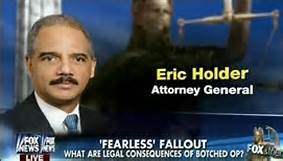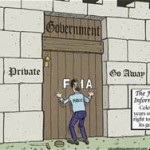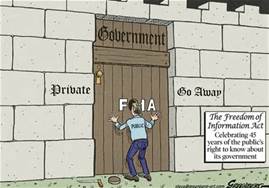Contempt, Oversight hearing, more contempt. The original story of Fast and Furious has been litigated and yet there is no solution or consequence, when in fact another operation has since occurred named Operation Fearless. At the core of these two operations is the Department of Justice, ATF and hired operatives.
Darrell Issa: Reprimand of ‘Fast and Furious’ official justifies Eric Holder contempt lawsuit
House Committee on Oversight and Government Reform Chairman Darrell Issa believes new disciplinary action against a government operative in the “Fast and Furious” gun running scandal reinforces a Congressional contempt charge against Attorney General Eric Holder.
Issa, R-Calif., said former Arizona U.S. Attorney Dennis Burke “undoubtedly deserved” the reprimand he received from the Arizona State Bar for leaking information to the press about the gun-running operation. Issa said it also justifies the GOP-led lawsuit against Holder for information relating to the matter.
“Dennis Burke’s disciplinary agreement with the Arizona State Bar makes clear his belief that Eric Holder’s Justice Department was more interested in politically protecting itself than giving Congress full information about what happened in Operation Fast and Furious,” Issa said on Monday.
Burke was reprimanded last week by the Arizona Bar for leaking classified Fast and Furious documents to two media outlets.
Republican lawmakers are entangled with Holder in a court case stemming from a June 2012 House vote to hold him in contempt of Congress for failing to turn over documents and emails related to the gun-trafficking case.
Both sides are preparing to present arguments before a federal judge, who will then issue a judgement in the case. So far, the judge has rejected efforts by the Justice Department to dismiss the House lawsuit.
“These documents will shed light on the nature of the Department’s false denials of improper conduct and its response to Congress, including misconduct of which Dennis Burke was aware, that Attorney General Holder refused to discuss with Congress,” Issa said.
The Fast and Furious operation was run by the Bureau of Alcohol, Tobacco, Firearms and Explosives to try to trace gun sales to Mexican drug cartels. The program, which was based out of Phoenix between 2009 and 2011, when Burke headed the Attorney General’s office there, ended up allowing more than 1,400 guns to be smuggled over the Mexican border and one of them was used to kill a U.S. Border Patrol agent.
Burke told the Arizona Bar and congressional investigators in an earlier interview that he leaked the Justice Department information to the media to provide more transparency about the matter.
But Issa said Monday he believes Burke gave out the information to reveal who inside the government had originally blown the whistle on the deeply flawed operation.
“His actions to selectively leak a single document supporting a misleading narrative, though a common tactic in the Obama administration, was a cowardly and self-serving action intended to smear a whistleblower,” Issa said.
Now we move on to Operation Fearless
The Committee first became aware of Operation Fearless, a storefront operation in Milwaukee, Wisconsin, from media reports in January 2013. These reports made clear that Operation Fearless was fundamentally mismanaged, evidenced by the fact that nearly $40,000 in merchandise and three guns were stolen from ATF agents during the operation, including a fully-automatic rifle. After months of delay, ATF officials finally briefed congressional staff on April 15, 2013, representing that such storefront operations were limited to the single instance in Milwaukee. Subsequent media reports, however, revealed that the ATF used these same storefront stings across the country. In one case, the ATF exploited a mentally disabled man to work at the storefront. In another, the ATF had a mentally disabled man tattoo a squid smoking a joint on his neck.
The Committee’s Subpoena Requires ATF to Provide Documents Including:
· Communications relating to Operation Fearless Distributing and the Monitored Case Program at ATF.
· Operational plans and relevant Reports of Investigation for undercover storefront operations conducted around the country.
· Documents relating to authorization for ATF agents to sell weapons during these operations.
· ATF policies for conducting undercover storefront operations.
· Relevant Reports of Investigation, for undercover storefront operations conducted between January 1, 2010 and March 19, 2014, in any of the following cities:
o Milwaukee, Wisconsin
o Portland, Oregon
o Wichita, Kansas
o Albuquerque, New Mexico
o Pensacola, Florida
o Atlanta, Georgia
_________________________________________
Some things concocted by government and then approved are not only disgusting but deadly.







